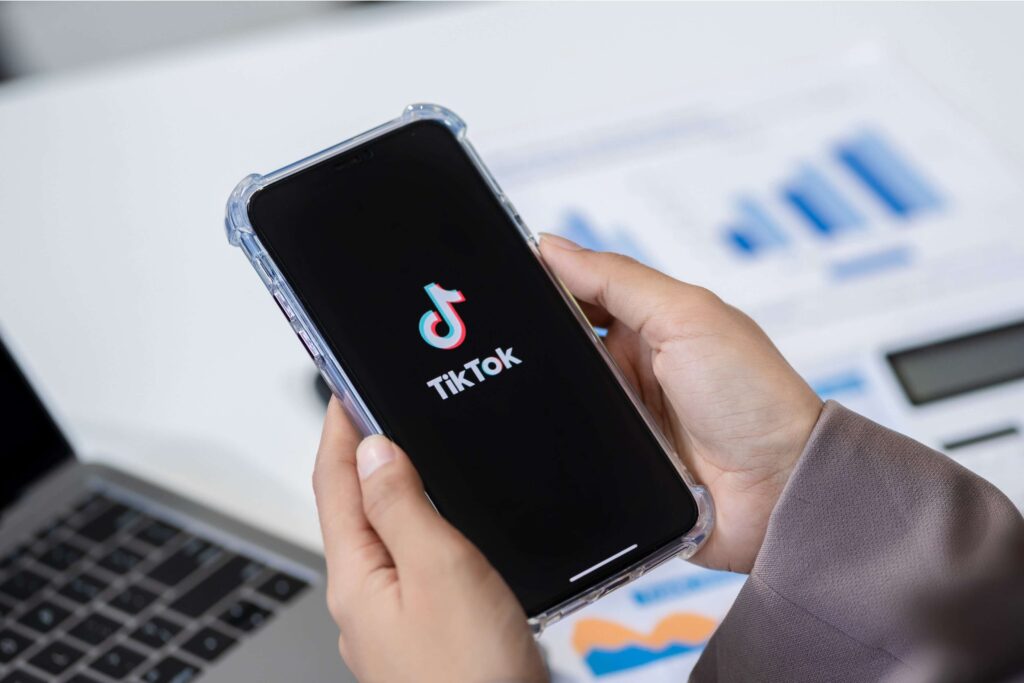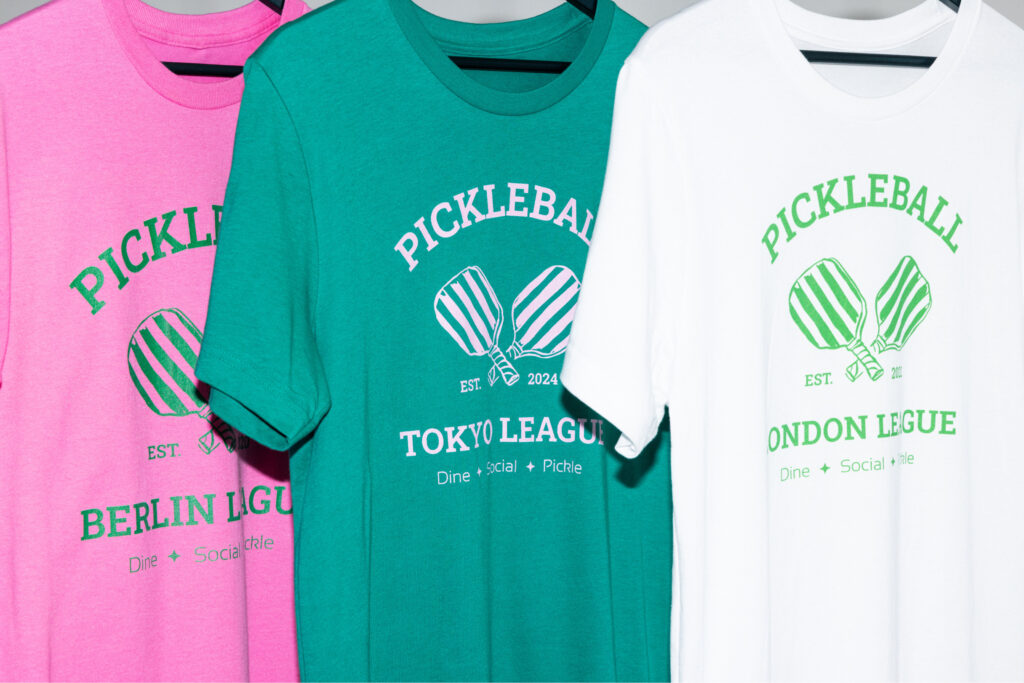Custom products, global reach
Want the freedom of running an Amazon store without the headache of storage space, shipping, or upfront costs? This guide is your cheat code.
Learn how to sell on Amazon without inventory and skip the stress of stacking boxes in your living room. Whether it’s dropshipping, Print on Demand with Printify, or selling digital products, here are the smartest ways to build an online business that runs lean, fast, and profitably.
We’ll break down the top inventory-free business models, what makes them work, and how to pick the right one for your Amazon store.
Key takeaways
- You don’t need inventory to sell on Amazon. Try dropshipping, Print on Demand (POD), digital products, FBA, FBM, Merch on Demand, or the Amazon Associates Program to start making money.
- Print on Demand and dropshipping are cost-effective to start – no stock needed. Dropshipping lets you sell existing products from suppliers, while POD makes it easy to create custom products.
- Digital products and affiliate marketing are great for creators to make money – no shipping, no stock, just pure online sales.
- Want to streamline fulfillment and stand out on Amazon? Use Printify’s POD services to design, sell, and ship custom gear without lifting a box.
7 Ways to sell products on Amazon without inventory
Starting your Amazon selling journey as a new business owner? These seven proven methods show you how to sell products on Amazon without buying inventory upfront.
1. Print on Demand

Print on Demand is the best way to explore how to become an Amazon seller without inventory. Sell physical products that stand out in the marketplace, with all the logistical benefits of dropshipping.
Instead of selling generic items, you add custom designs to product blanks. From apparel and phone cases to custom mugs, products are only printed when an order is placed. This lets you offer unique items without holding stock.
- Sign up with a POD platform like Printify.
- Design products and upload them to your Amazon store.
- When a customer purchases a product, the provider prints, packs, and ships the item.
- Track orders and focus on marketing while making a profit.
Pros:
- Products are printed on demand, so nothing is left unsold.
- No need to manage inventory or fulfillment.
- Zero upfront costs.
- Branding opportunities provide a competitive edge.
- Global fulfillment centers.
Cons:
- Takes time for design work before launching.
- Dependency on third-party providers.
Make it happen today!
Increase your eCommerce sales with print-on-demand products. Partner with Printify today.
2. Dropshipping
Amazon dropshipping is a popular choice that allows you to sell finished products without managing inventory. Unlike traditional selling, you partner with suppliers who handle storage and the entire fulfillment process for you.
How it works:
- Research reliable suppliers with products that fit your brand.
- Create your Amazon storefront and list the items.
- The supplier ships the product directly when a customer places an order.
- You manage pricing, promotions, and customer service.
Pros:
- Low startup costs.
- No need to manage inventory.
- Automated order fulfillment.
- A large variety of products.
- Global fulfillment centers.
Cons:
- No product customization.
- Dependency on third parties for quality control.
- Long shipping and delivery times.
- High competition in a saturated market.
3. Selling digital products

Consider virtual items like audiobooks, printables, art prints, and music to make money without inventory.
A popular option is selling eBooks via Amazon Kindle Direct Publishing (KDP), but make sure to familiarize yourself with Amazon’s strict eBook guidelines.
For music, try TuneCore or DistroKid. TuneCore is Amazon’s go-to but lacks direct digital rights management (DRM). DistroKid offers more flexibility, better tools, and broader distribution – ideal for musicians ready to scale.
- Amazon TuneCore charges $22.99/year for singles and $39.99/year for albums. Distribution to social media platforms is free with the Unlimited plan.
- DistroKid plans start from $24.99/year for unlimited songs.
How it works:
- Prepare your digital product.
- Sign up for a platform like Amazon Kindle Direct Publishing (for eBooks) or DistroKid (for music).
- Upload your content, set the pricing, and promote it.
- Customers buy and download instantly, and you receive payments directly from the platform.
Pros:
- Inventory-free selling.
- Low startup costs, depending on the digital product.
- Full control over price and profit margins.
- Create once and sell the same product continuously.
Cons:
- Requires specific skills for product creation.
- Extra marketing efforts to gain visibility and traffic.
- High competition, depending on the niche.
4. Fulfillment by Amazon (FBA)
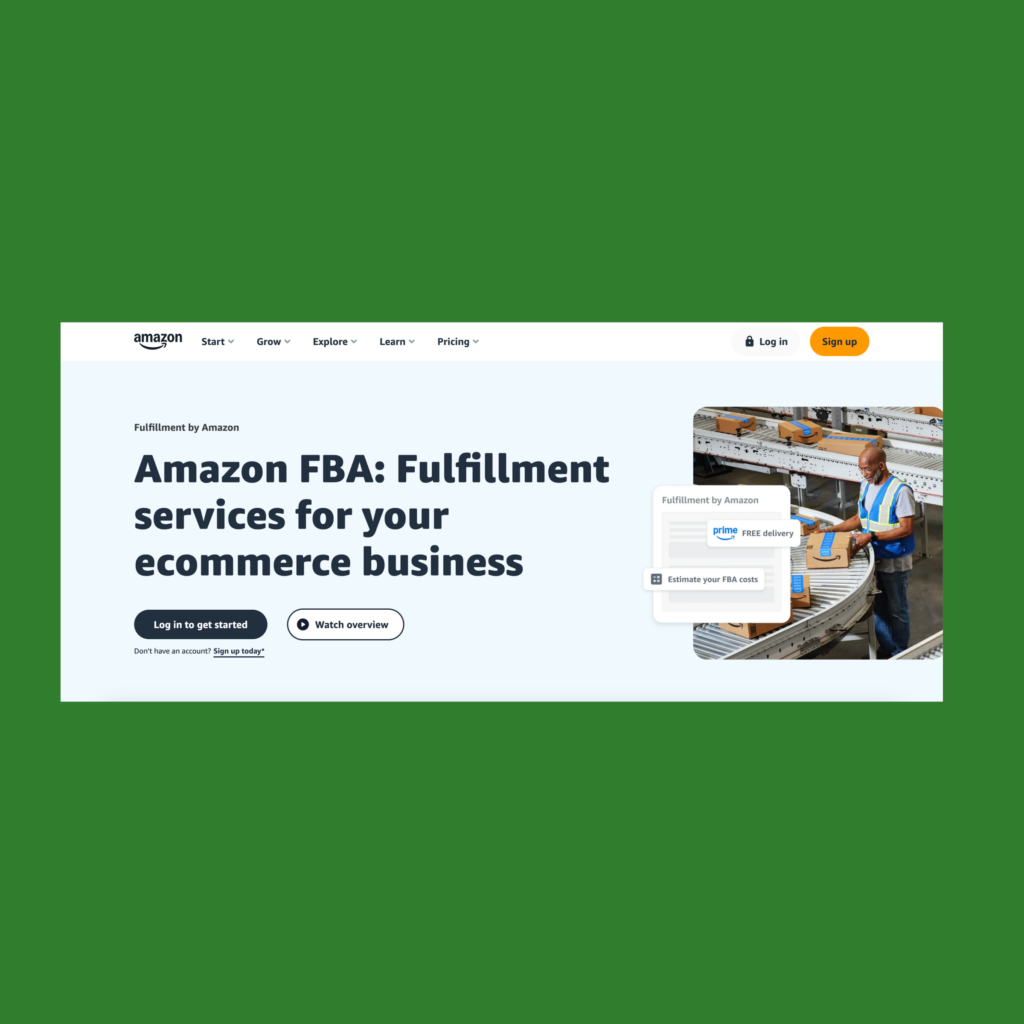
Fulfillment by Amazon (FBA) lets you outsource storage, packing, and shipping to Amazon. Your listings become Prime-eligible, which means faster delivery and higher customer satisfaction.
While you don’t handle logistics, you do need to purchase upfront inventory and ship it to Amazon’s fulfillment centers.
FBA is ideal if you’re an Amazon seller who sources discounted, high-margin products and resells them for a profit.
How it works:
- Make an Amazon seller account with an Individual or Professional plan.
- Create listings following Amazon’s requirements and specify your choice to sell using FBA inventory.
- Register using the FBA seller platform to send your inventory to a fulfillment center. Check Amazon’s guidelines for packing and shipping.
- Once connected, Amazon handles fulfillment, including shipping and customer service.
Pros:
- Outsource storage and fulfillment to Amazon.
- No need to find a third-party provider.
- Build credibility and trust with buyers.
- Great customer service.
Cons:
- Purchasing upfront inventory is necessary.
- Amazon sellers are subject to referral, commission, and storage costs.
- No low-stock notifications – FBA inventory is tracked manually.
- Strict shipping guidelines and little control over pricing and fees.
5. Fulfillment by Merchant (FBM) with Third-Party Logistics (3PL)
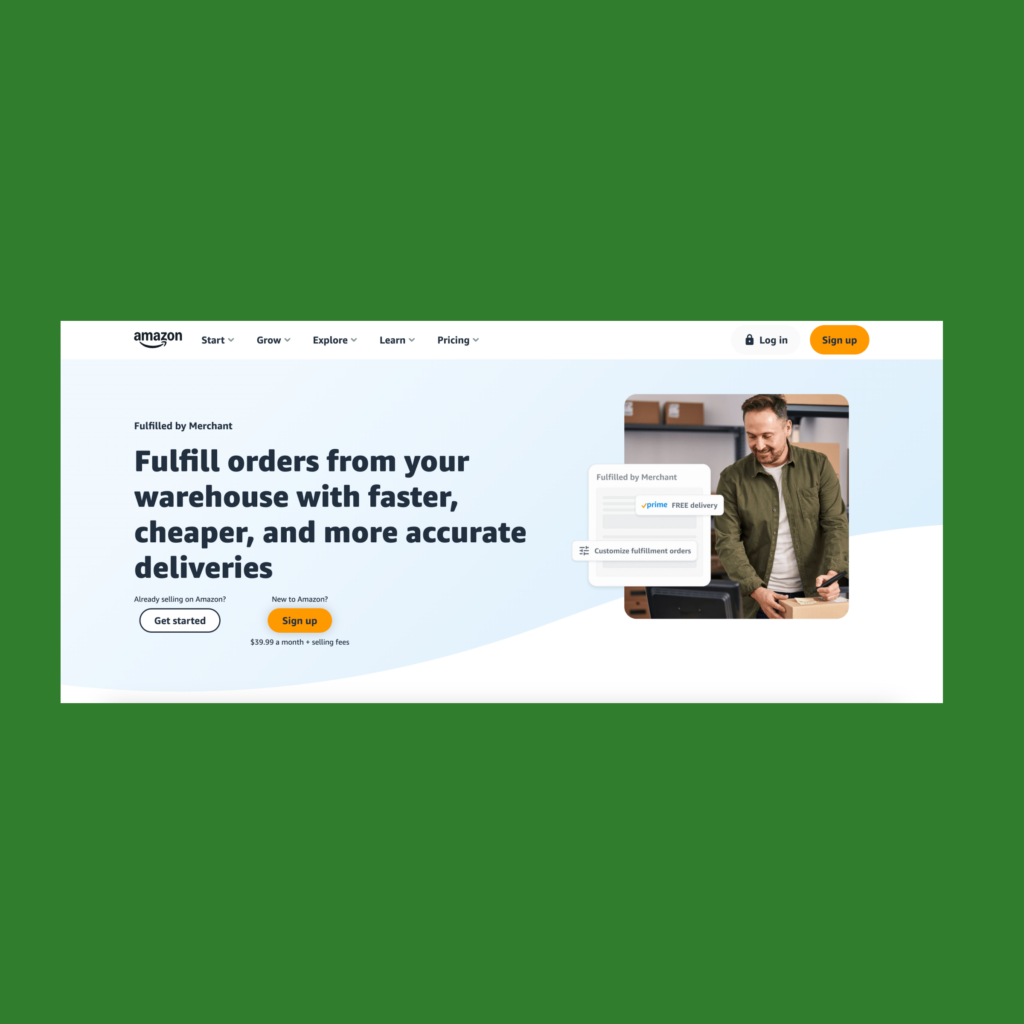
Another approach on how to become an Amazon seller without needing to store inventory is partnering with a third-party logistics (3PL) provider for FBM.
Instead of using Amazon’s FBA warehouses, your 3PL handles storage, packing, and shipping for you. Compared to standard dropshipping, 3PLs offer more control over product quality, customer service, and the overall buyer experience.
Make sure to thoroughly research and select reliable third-party providers that can meet your shipping needs in terms of coverage and product type.
How it works:
- Set up your Amazon store with FBM and list your products.
- Partner with a trusted 3PL to store and ship your items.
- Your 3PL fulfills orders as they come in while you manage product listings and customer inquiries.
Pros:
- More control over your brand and customer experience.
- Flexible options with 3PLs to scale quickly as demand changes.
- Third-party providers can offer personalized shipping and handling solutions.
Cons:
- Requires upfront investment to purchase and supply inventory to your 3PL.
- Product quality and consistency can be challenging to monitor.
6. Amazon Merch on Demand
With Amazon Merch on Demand, you can design custom products like t-shirts and hoodies while Amazon prints and ships them as customer orders come in.
This on-demand solution lets you start selling physical goods without upfront investment or inventory, making it a low-risk entry into the Amazon marketplace.
How it works:
- Sign up and get approval.
- Upload your designs and select products.
- Amazon generates your listings, while you set up pricing and descriptions.
- Once a sale is made, Amazon handles production and shipping.
Pros:
- Zero inventory.
- Fully integrated process within the Amazon platform.
- Prime-eligible shipping.
Cons:
- Limited product types.
- Competitive market.
- Royalty-based earnings.
7. Amazon Associates Program
The Amazon Associates Program allows you to earn a commission by promoting Amazon products through affiliate links.
Perfect for bloggers, content creators, or influencers, it doesn’t require inventory or product management. Simply link to Amazon listings and earn when followers purchase.
How it works:
- Sign up for the Amazon Associates Program.
- Share unique affiliate links to Amazon products.
- Earn a commission when a follower clicks and makes a purchase.
Pros:
- No inventory management.
- Easy to integrate with platforms like blogs and social media.
Cons:
- Lower commission rates for some categories.
- Limited control over product selection and availability.
Make it happen today!
Pros of selling on Amazon without inventory
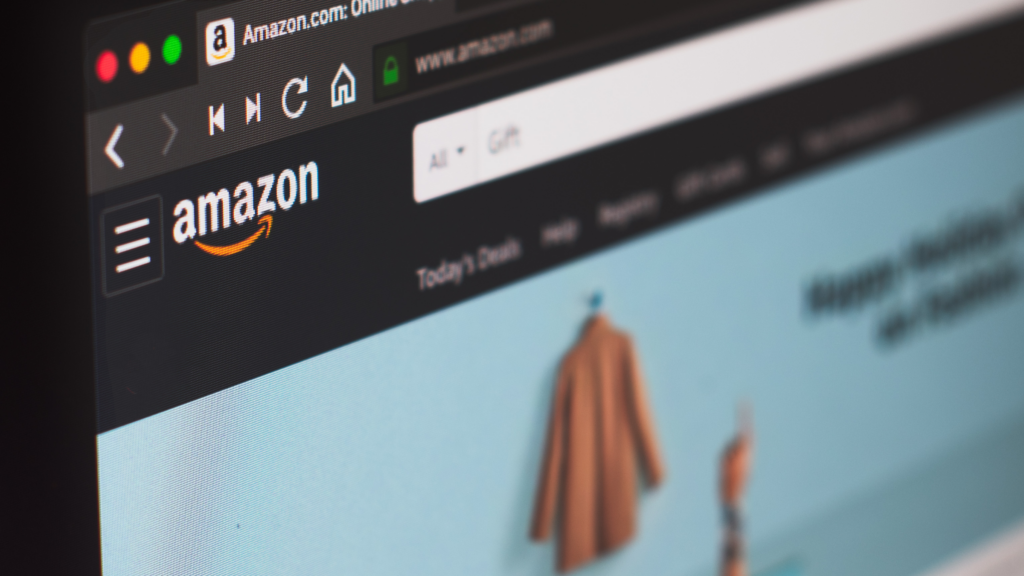
Start selling on Amazon without holding stock to gain more flexibility while still making a profit. Here’s why no-inventory selling works for so many entrepreneurs.
Fast and easy launch
Amazon’s platform helps you start selling quickly. With easy account setup and built-in logistics support, there are multiple ways to sell without needing to store or ship products yourself.
Low overhead costs
Since you’re not storing large amounts of inventory, upfront expenses aren’t a factor. This means it’s easier and cheaper to grow your business from day one.
Reduced financial risk
Without buying products in bulk, you won’t end up with unsold inventory. This flexibility lets you experiment and adjust to product trends without extra risk.
Global reach
Whether you’re selling physical or digital products, reach customers worldwide without dealing with complex shipping and customs.
Easy to scale
Amazon’s resources, from fulfillment centers to digital sales channels, make it easy to adapt to demand. Quickly add new products, adjust listings, and grow without the hassle of inventory.
Sell without risk
With solutions like Print on Demand, you can create and sell unique designs without keeping stock. It’s a great way to test niche products and build a brand without upfront costs.
Tips for success
Here are some quick tips to help you stand out, attract customers, streamline operations, and maximize your success selling on Amazon – without paying for inventory upfront.
1. Do your market research
Analyze market trends and see if Amazon has any product restrictions. This will help you identify profitable products and avoid restricted items.
2. Find your niche
Choosing a specific niche helps you stand out and attract a loyal customer base. These targeted products often have less competition than popular, broad categories.
3. Choose a reliable fulfillment method
Whether it’s Print on Demand, dropshipping, or FBA, carefully select reliable suppliers based on your niche, business goals, and target audience.
4. Set the right price
Price for profit while staying competitive. Account for costs, margins, and compare similar offerings when setting your product’s selling price.
5. Keep customers in the loop
Be upfront about shipping times, product availability, or any potential delays. That way, customers know what to expect and are willing to shop with you again.
How to sell products on Amazon without inventory using Printify
With Printify, you get seamless automation tools for multi-channel selling at your fingertips – plus, there are no inventory fees.
We handle the entire fulfillment process, from printing to shipping, while you focus on creating and selling products on Amazon.
1. Create an account
Sign up for free and explore our services. Our tools make it easy to set up, design products, and launch your eCommerce business quickly.
2. Choose what to sell
Browse our Catalog of over 1,300 high-quality products – from apparel to home decor. Prioritize profitable products with strong demand, low competition, and good profit margins.
3. Connect your store
Register a Professional Seller Central account on Amazon, then head to your Printify dashboard and connect Amazon via My stores → Add new store.
When adding a custom product, request a GTIN (Global Trade Item Number) exemption to list your Printify merchandise without needing a product barcode.
4. Create products and edit listings
Use our Product Creator to design your items. Then, create and optimize product listings with targeted keywords, clear titles, and upload high-quality images to attract buyers.
Check out our article on how to sell shirts on Amazon without inventory.
5. Promote your store
Drive traffic using Amazon ads, social media, email, and content marketing. Offer promos or discounts to drive conversions, and focus on excellent customer service to build loyalty.
6. Monitor your performance
Check your performance metrics, sales, and customer feedback regularly. Fine-tune your pricing strategy, improve listings, and expand your product line to earn money and scale your store.
FAQ
Yes! Sell t-shirts and other products on Amazon without holding physical inventory by using dropshipping, Print on Demand, or selling digital art and other virtual goods.
These methods allow third parties to handle storage and shipping or let customers download your products instantly.
If you’re looking to learn how to sell on Amazon without touching products, consider partnering with third-party suppliers through dropshipping, using Print on Demand for custom items, or selling digital products like eBooks or music.
No, an LLC isn’t required to sell on Amazon. You can operate as a sole proprietor, though an LLC may provide benefits like liability protection and tax advantages, depending on your business needs.
Yes, with the right strategy and time. Start with market research and focus on profitable products with solid demand and low competition. Optimize your product listings with high-quality images, clear descriptions, and relevant keywords to grow sales.
It’s also important to nail your product pricing. Don’t just undercut competitors – calculate your sourcing costs, Amazon’s fees, and ideal profit margin.
Want to earn money without upfront costs or inventory? Try Print on Demand with Printify – sell custom products on Amazon and never worry about order fulfillment.
It depends on your product category and fulfillment method. On average, Amazon takes about 15% in referral fees – so that’s $15 right off the top.
If you’re using Amazon FBA, there are storage and fulfillment fees, which could slice another $8-$15, depending on your product size and weight.
That leaves you with around $70-$77 before production and ad costs. It’s why choosing profitable products and mastering your pricing strategy is crucial.
Conclusion
Selling on Amazon without inventory is a cost-effective and low-risk way to launch and grow your business. With Printify, there’s no need to manage your own inventory – we’ll handle customer orders, fulfillment, and shipping.
By utilizing tools like Printify’s Product Creator and integrations, you can streamline your workflow and stay ahead of customer preferences easily.
Whether you’re leveraging POD or a different fulfillment method, this is a great way to keep costs low while scaling fast on Amazon.




